February is Invasive Species Awareness Month in Hawaii. As a biodiversity hotspot, much of Hawaii’s native flora is threatened by invasive species and has been in decline for years. Last year, a United Nations report from the Intergovernmental Science-Policy Platform on Biodiversity and Ecosystem Services (IPBES) documented the accelerating rate of species extinction worldwide with overwhelming evidence that ecosystem health is deteriorating faster than ever.
With these stunning results in mind, there is no better time than now to learn about the threats Hawaii and tropical regions worldwide face from invasive species. Here are a few to be aware of in Hawaii and simple ways to get involved and help protect plants.
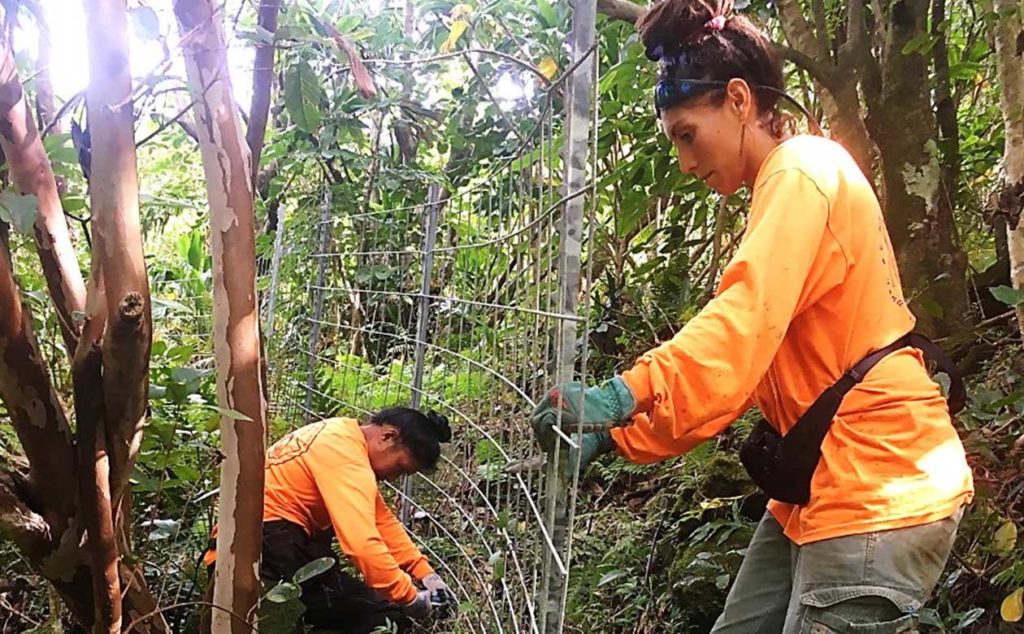
Not all species introduced to a new place are detrimental to their environment. Invasive species are organisms that are not native to a particular ecosystem or region and cause environmental or economic harm to the area. Invasive species are often introduced with human assistance and are harmful to ecosystem health because they quickly adapt to their new environment and reproduce rapidly. Invasive plants, for example, can multiply swiftly and starve native plants of essential nutrients or resources. This results in the entire ecosystem being disrupted since other plants and animals (including humans) depend on native species for food, shelter, and clean water.
Plants and animals native to Hawaii are unique because of the archipelago’s isolated location. Many species that evolved across the islands did so without threats from predatory species and did not develop defense mechanisms like thorns or toxins meant to deter them. This is one of the reasons many native Hawaiian species can’t thrive when introduced species become invasive.
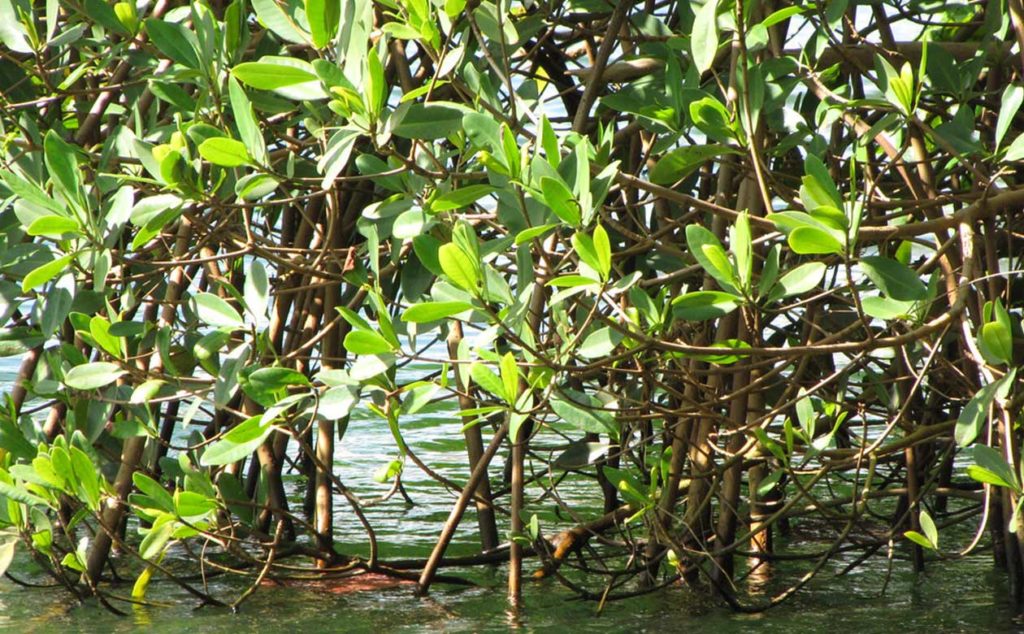
Kauai is home to National Tropical Botanical Garden’s administrative headquarters, Botanical Research Center, Conservation Nursery, and three of our five botanical gardens. The Huleia River is a major waterway in the Nawiliwili watershed on Kauai with a long and significant history documented in Hawaiian stories and chants. Today, the river and surrounding wetlands face severe threats from an invasion of Red Mangrove (Rhizophora mangle). Malama Huleia is a nonprofit organization dedicated to removing invasive mangroves and reestablishing the native wetland ecosystem. By their evaluation, two miles of the riverbanks are 100% overgrown by red mangrove. The increasing mangrove density is threatening the habitat of at least five endemic waterbird species that are considered endangered due to habitat loss.
Clearing the invasive mangrove from the river and surrounding wetlands isn’t just crucial for restoring habitat for endangered birds. It also provides an opportunity to replant appropriate native Hawaiian and Polynesian introduced plants. You can help Malama Huleia by volunteering and sharing their work. Monthly community workdays are scheduled on the second Saturday of every month from 8:00 a.m. until 12:00 p.m. Visit the Malama Huleia website for further details.
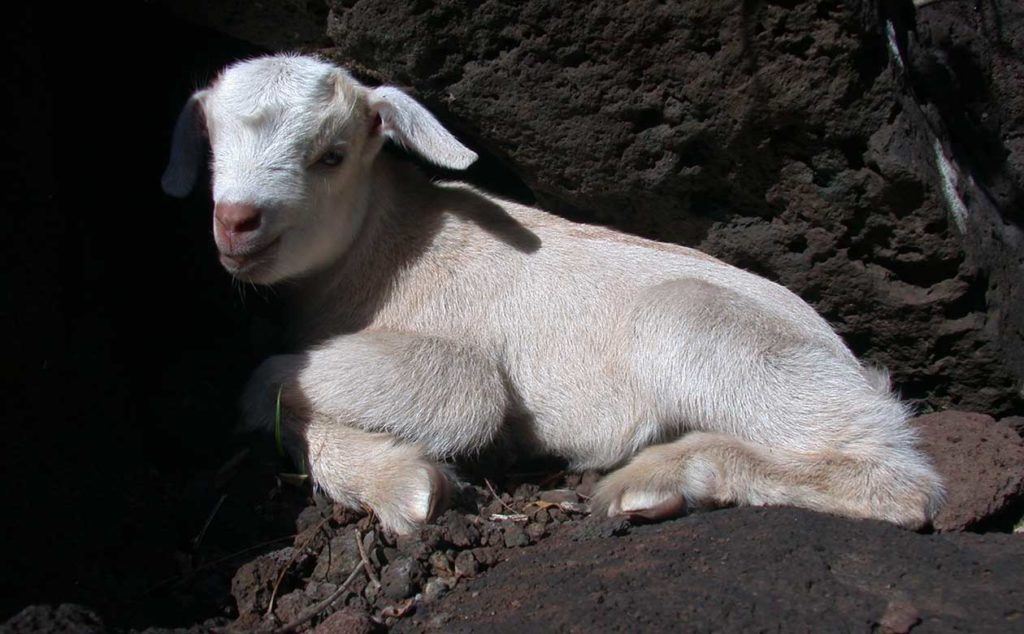
Although fantastic, we’re not speaking of the PBS miniseries, but rather some of the most notorious and destructive invasive species in Hawaii. Ungulates or hoofed animals such as pigs, sheep, deer, and goats pose a significant threat to native plants in Hawaii. These hoofed animals can graze or uproot hundreds of plants in just one night and contribute to soil degradation and erosion. To protect our gardens and preserves, NTBG staff install and maintain miles of fencing to keep ungulates away from restoration sites.
Feral pigs alone have been shown to contribute to habitat loss and endangerment of sixteen Hawaiian honeycreepers – small, colorful birds endemic to Hawaii. In partnership with several national and local experts in the field, NTBG Science and Conservation staff contributed to the recently published research study of the effects of introduced ungulates (feral deer, goats, pigs) on native and alien plant species in the mesic forests of the Hawaiian island of Kauai.
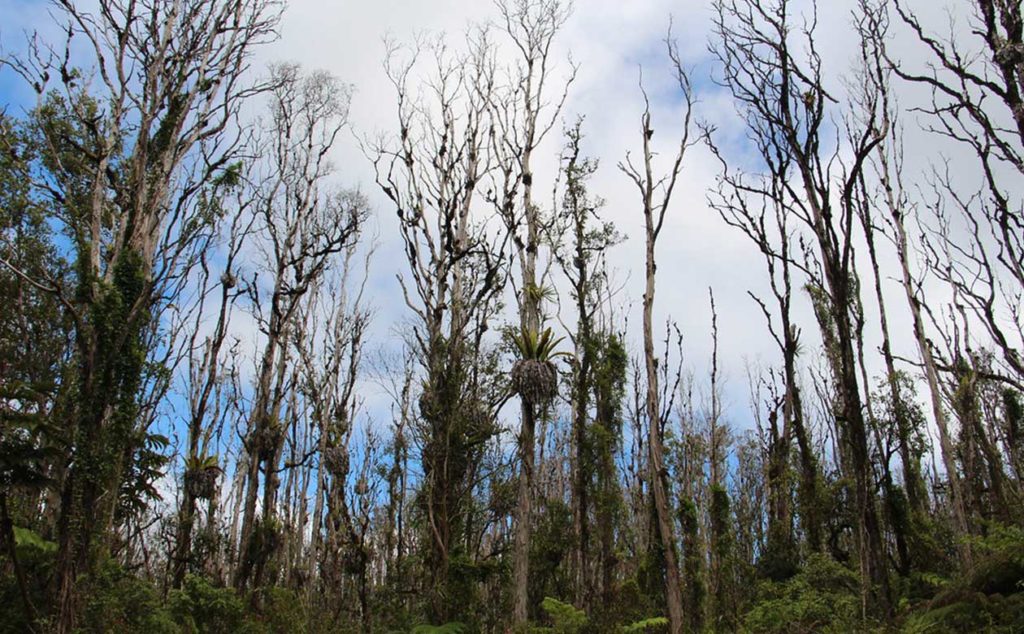
Ohia trees are the most abundant, ecologically important, and culturally significant plants in Hawai’i. They provide food and shelter for native animals and endangered forest birds, facilitate healthy soil development, aid in replenishing aquifers, and are prominent in many Hawaiian stories, songs, and chants.
Nearly ten years ago, ohia trees on the Big Island of Hawaii began dying rapidly. Whole swaths of the forest seemed to wither and die overnight. In 2014, two species of invasive microscopic fungi were identified as the cause of Rapid Ohia Death (ROD). The deadly fungal spores spread easily through the air and invade ohia through broken branches or wounds in the trees. More than 135,000 acres of native forest on Hawaii Island have been affected, and in 2018, the fungal pathogens were also found on Kauai, Maui, and Oahu.
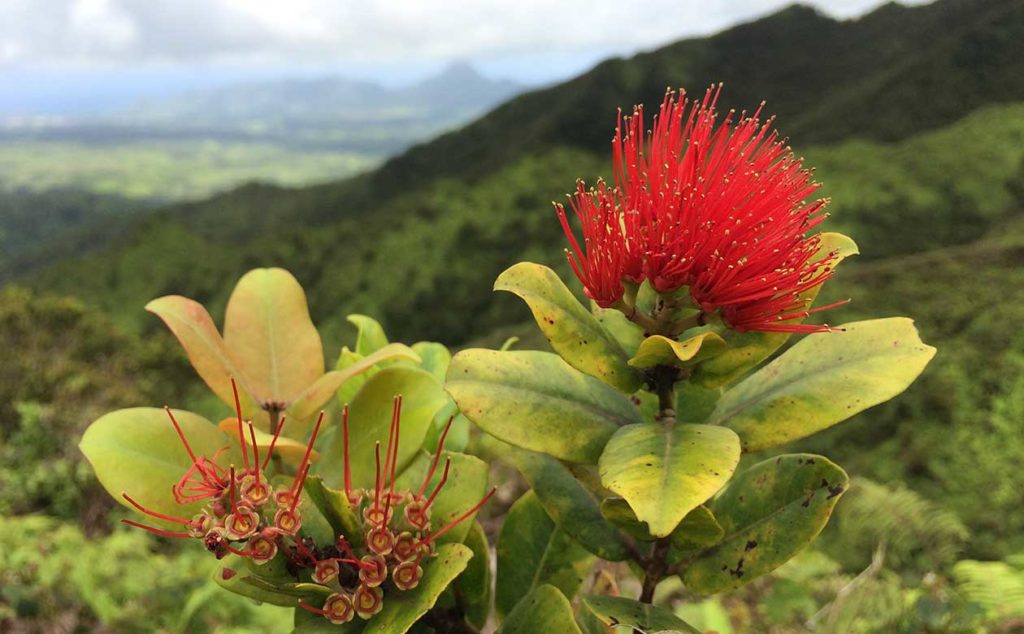
Experts across the state of Hawaii have formulated a ROD strategic response plan. NTBG is part of the team collecting seeds and storing geographically and genetically diverse plant material that can act as a “genetic safety net” and help study resistance to the diseases. As of today, NTBG has 8,612,584 ohia seeds in storage. Staff and volunteers at the NTBG Seed Bank and Laboratory are conducting research and tracking data that will support ohia restoration efforts statewide.
There are five things every individual can do to protect ohia and prevent the spread of ROD in Hawaii:
Hawaii is a gardener’s paradise. Unfortunately, many plants introduced for their ornamental value have escaped from home gardens and become invasive in Hawaii. Plants in the Melastomataceae family often have beautiful flowers and foliage but can produce more than 1000 seeds per square meter and grow aggressively, crowding out and overshading native species.
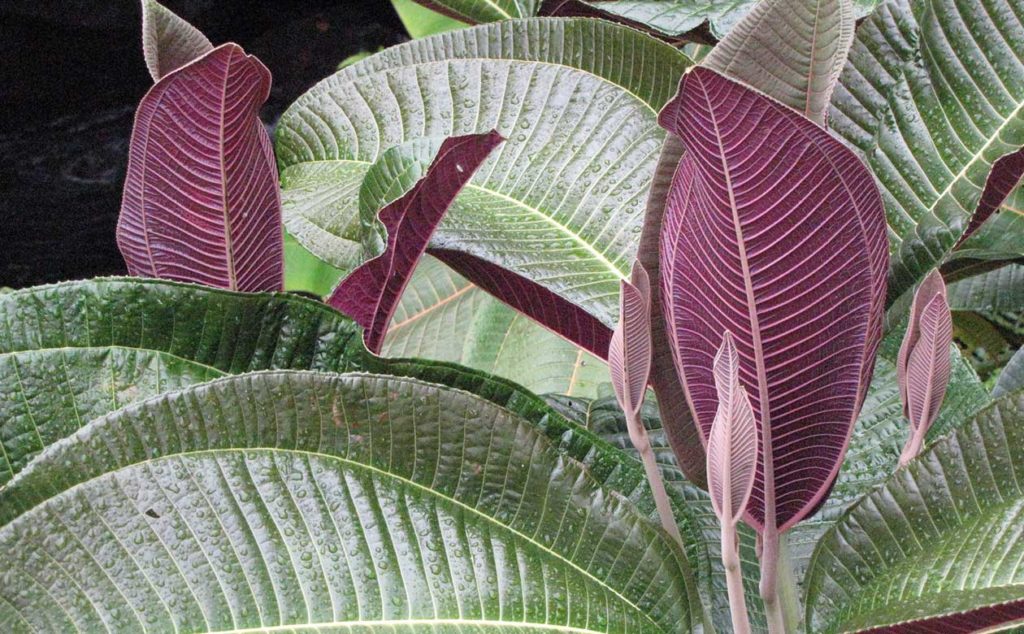
Miconia is one member of the Melastomataceae that is particularly aggressive and considered a noxious weed in Hawaii. Miconia are large trees that can grow up to 50 feet tall and produce large, oval-shaped, two-toned leaves. These plants are native to South and Central America and were introduced to Hawaii as a garden landscaping plant in the early 1960s.
Because Miconia trees can grow so tall and produce large leaves, they shade out native plants and can take over native native forests. The large leaves can also act as an ‘umbrella’ and reduce the amount of water that seeps into the watershed. Miconia also have a shallow root system which contributes to soil erosion and produces thousands of sand-grain sized seeds which are easily spread by birds, small animals and hikers. Miconia was introduced to Tahiti in the 1930s and has taken over two-thirds of native forest threatening 25% of native forest species with extinction.
Landscaping your yard with native species is a great way to combat the spread of invasives and restore your local ecosystem. Native plants provide shelter for local birds and attract bugs and butterflies, which can be food sources for other native wildlife. Check with your local botanical garden and plant nurseries to see if purchasing natives is an option for your community. NTBG’s South Shore Gardens will host a plant sale on February 27, 2021. Shop for plants and meet experts that can help you plant native and keep Kauai safe.
Preventing the spread of invasive species in Hawaii and protecting native ecosystems is vital to protecting and preserving biodiversity. For more information on invasive species in Hawaii and ways to get involved, visit the following resources: